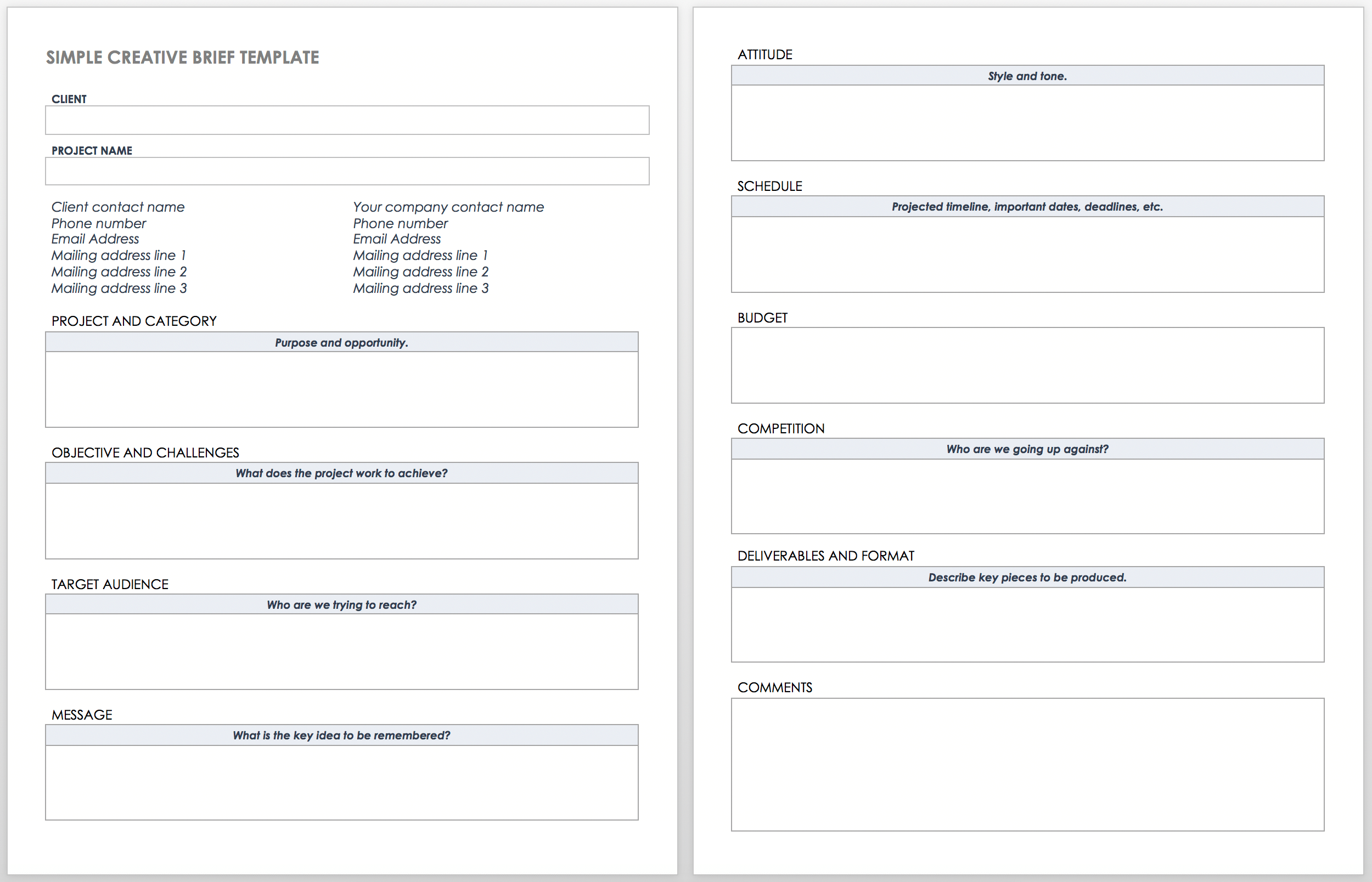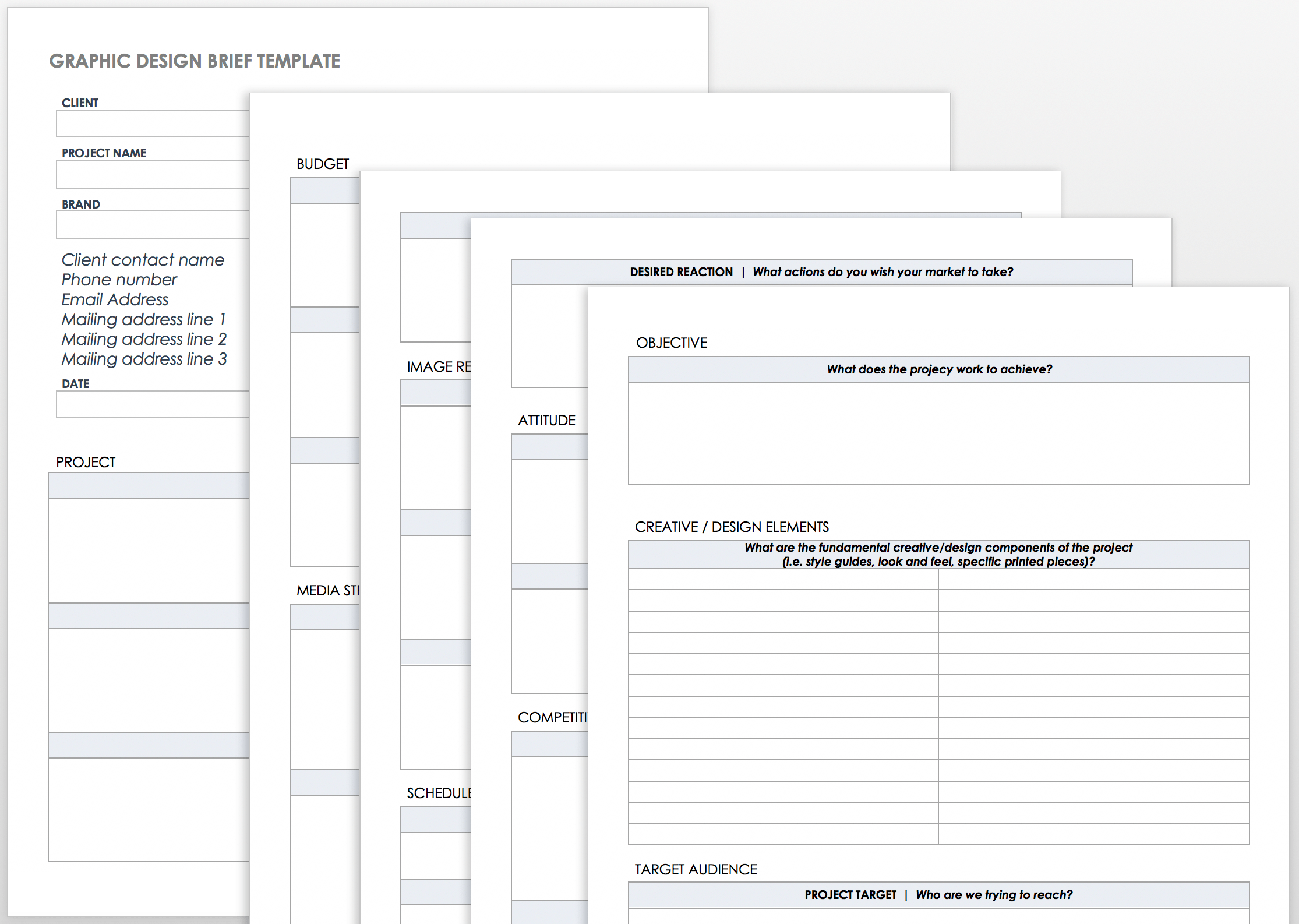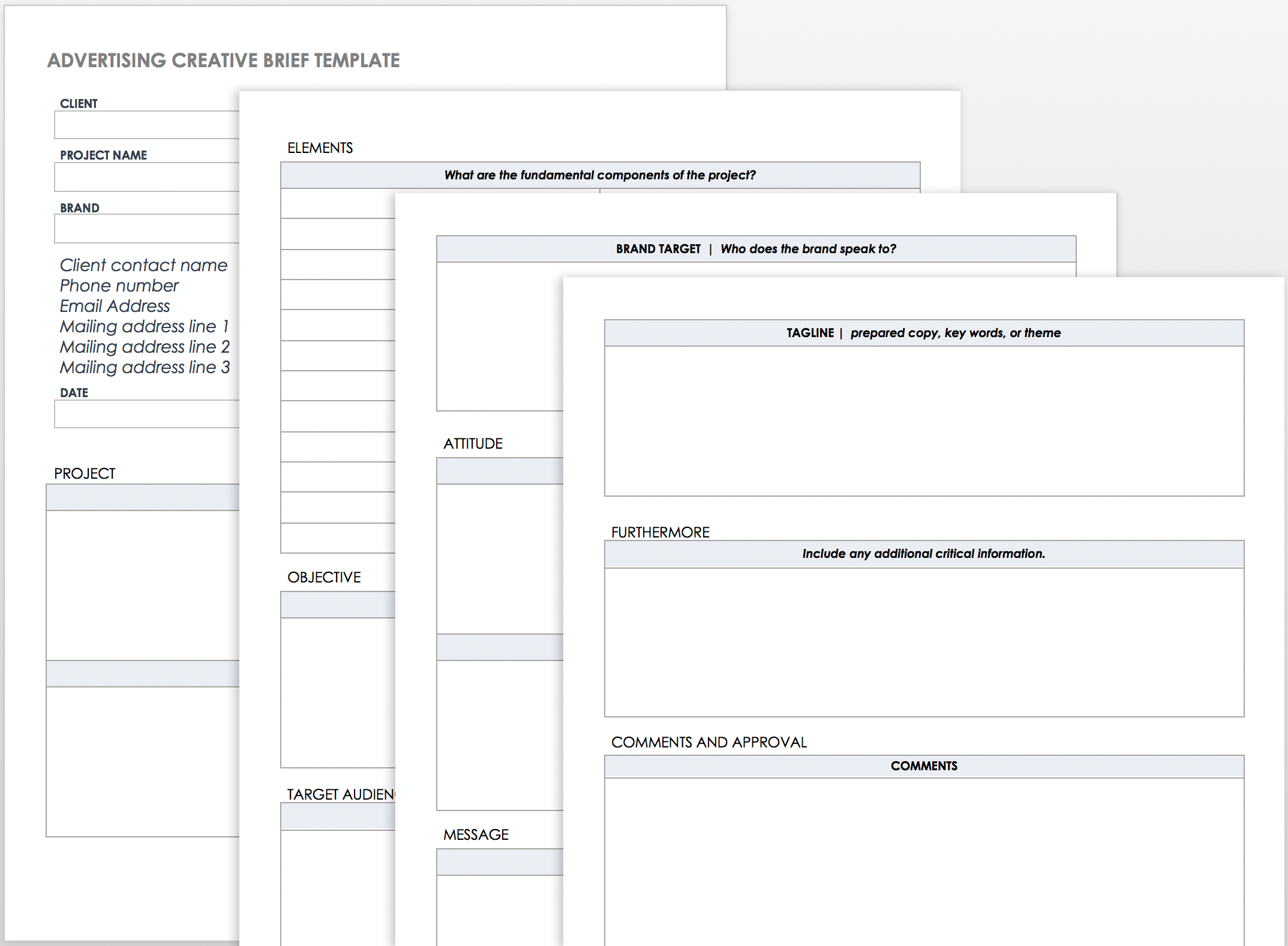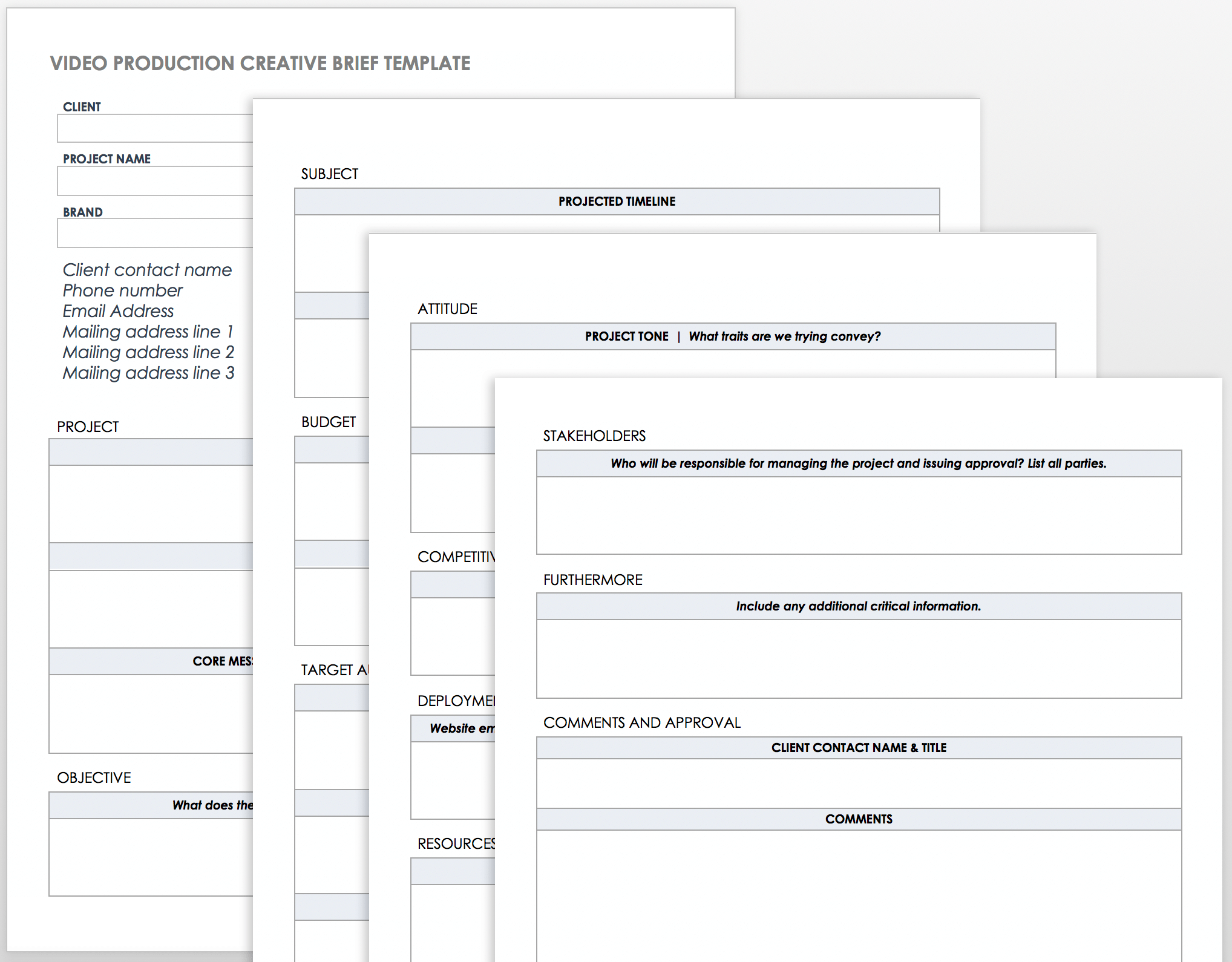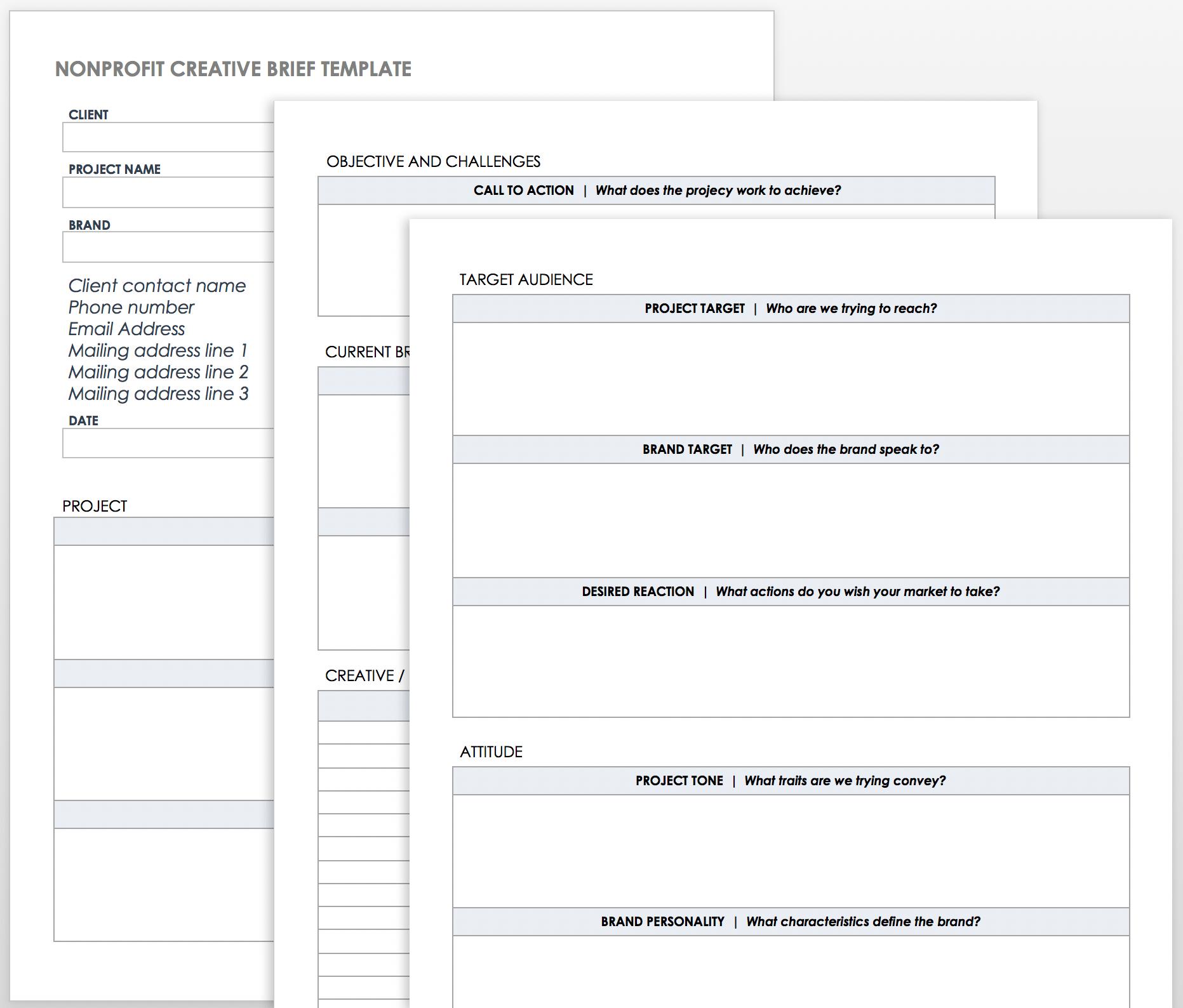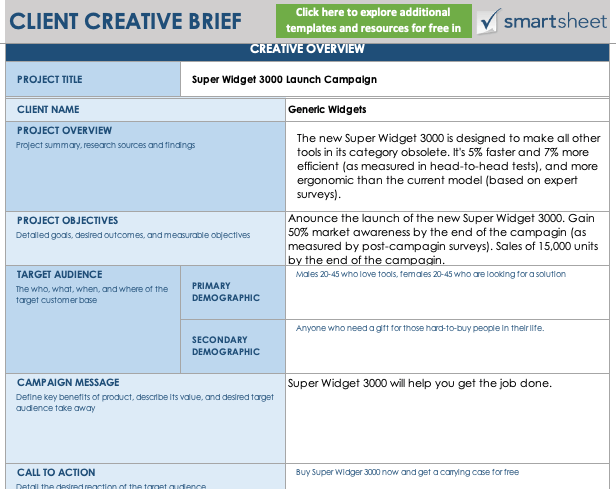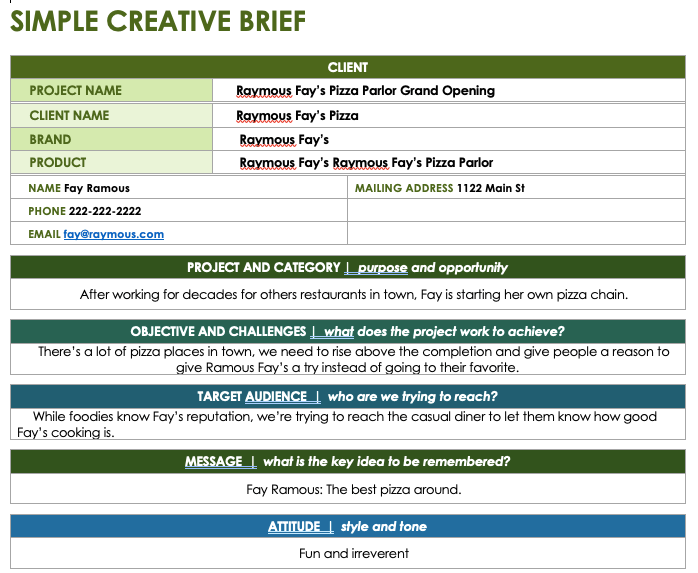Creative Brief Template
Download Client Creative Brief Template
This template allows you to create a detailed creative brief with the functionality of a spreadsheet. All of the essentials are included, from project goals and guidelines to budget and approvals. There is room in this template for a lot of information, but it can be customized to suit any project, whether you’re working with multiple deliverables or a single task.
Simple Creative Brief Template
Download Simple Creative Brief Template
There’s something to be said for simplicity. This creative brief template offers a basic outline to help you stay focused and plan efficiently. Using a simple template for your brief can remind you to focus on the most important points that need to be communicated. The generic quality of this template makes it suitable for a wide range of projects and business settings.
Graphic Design Creative Brief Template
Download Graphic Design Creative Brief Template
This creative brief template is intended for graphic design professionals. If you’re a solo graphic designer running your own small business, a creative brief template can help set a precedent of clear communication as soon as you land a new client. This template has a simple layout that is easy to read and edit, and it includes all of the important elements of a creative design brief along with room for additional notes.
Advertising Creative Brief Template
Download Advertising Creative Brief Template — Word
This advertising creative brief template is concise, but it covers all of the essentials for planning a brand advertising campaign. Objective, target audience, tone, messaging, and non-negotiables are all included, along with key advertising elements. The layout of this template allows for a lot of information in a relatively small amount of space, which can help a creative team produce an innovative and effective campaign.
Video Production Creative Brief Template
Download Video Production Creative Brief Template — Word
Plan your video production project with this creative brief template. It’s set up as a series of questions to help a client identify goals, needs, resources and constraints. Video production can be pricey, and this creative brief asks not only about budget, but also what gear, staff and other resources are available. It covers a wide range of information — from video quality to scheduling and management — to help ensure that the project runs smoothly and meets client expectations.
What Is a Creative Brief?
A creative brief is a short document that outlines the strategy, requirements, and vision for a brand or product, as well as the expectations, goals, and necessary resources. Companies and freelancers often use creative briefs in marketing or advertising campaigns.
Essentially, a brief is a communication tool that lays the groundwork for a campaign. The account manager creates the document in consultation with the client — this collaborative document helps ensure that all project stakeholders are on the same page from the start. The brief also helps the project to run smoothly, stay on schedule, and ultimately be successful.
The potential consequences of not using a creative brief include wasted time and money, miscommunication with clients, multiple revisions as the project keeps changing course, and a general lack of clarity on all sides, all of which can be avoided by using a creative brief. For a creative brief to truly be effective, it should be developed in a timely manner so that it streamlines the project timeline, rather than interfere with it.
To get you started, we’ve provided a collection of creative brief templates that you can download for free. You’ll find templates for advertising, graphic design, nonprofits, and more in Microsoft Word format, plus general creative brief templates for Microsoft Excel. We’ve also provided free creative brief templates in Smartsheet, a real-time work execution platform that makes outlining your marketing efforts easier and more collaborative than Excel.
How to Write a Creative Brief
Writing a brief can seem daunting, but it’s really just about gathering information and putting it into a template, like the ones below. For more information about each section, see “What to Include in a Creative Brief.”
- Start with an overview of the background of the company, brand, the product, and where it falls in its category.
- Talk about the desired objectives and anticipated challenges.
- Describe the campagin’s target audience.
- Outline the core message and call to action.
- Explain the tone of the project.
- Walk through the timeline.
- Outline the budget.
- Review the competition.
- Explain the media strategy, including the marketing guidelines and marketing materials; if needed, include the image requirements.
- Finish with contact information.
What to Include in a Creative Brief
Most creative briefs require the same standard information, whether you’re creating an ad campaign, designing a logo, or developing a website. These elements include background information, objectives and challenges, target audience, schedule, media strategy, and more, as described below.
- Background Overview: Provide information about the company, service, and product to establish the client’s identity and describe the product that you’ll be marketing. Describe the business, and include any background info that is relevant (including previous marketing campaigns) and anything else about their product or service that is relevant to the current project.
- Category Overview: Explain the current market perception of the brand, the product, and its category, and how you plan to use this to sell the product. If the brand and the product perceived differently, how will you address this? Can you link to a current cultural moment value, or idea? Does the economy have an impact (i.e., should you promote value or luxury)?
- Objectives and Challenges: Goals need to be clearly defined, be linked to key performance indicators (KPIs), and also be SMART (specific, measurable, achievable, relevant, time-bound) because they will provide a focus for the rest of the project. Whether the client wants to sell more products, increase brand awareness, or attract more donors, it needs to be clearly stated. There may also be a call to action. Outline the anticipated challenges and a brief description of how they’ll be mitigated.
- Target Audience: This is the most important item on the list: who is the buyer or intended audience? This may include demographic information such as age, gender, education, or income level, as well as info on how often they use the client’s product or service and and psychographic data on current and desired attitudes and feelings about the brand, product, or service. Explain the value proposition for this group. Knowing your audience will shape the style and messaging of your campaign.
- Message: This is where you put the chief message of the campaign, and usually it’s a concise slogan. What’s the main idea behind the campaign?
- Tone: Describe the tone or image that suits the client’s message or brand. Are there certain colors, fonts, or images that help communicate this? Describe the tone, whether it’s sophisticated, fun, or bold, and share the color, brand, and style guidelines.
- Schedule: Having a timeline is critical for planning any project. If there’s an advertising or publishing schedule you need to track against, match the deadlines for each deliverable.
- Competition: Understanding the competition can provide a clearer picture of where your client stands in the market, which will help you shape your campaign. Describe the competition and what they offer, and what makes your client unique in comparison.
- Media Strategy: List the channels that will be used, how each will be used, and why they are expected to be effective.
- Contact Information: Compile information on the client so interested parties can reach out to learn more, as well as that of who prepared the brief.
Best Practices for Writing a Creative Brief
Strong creative briefs ensure that all project stakeholders feel confident about the campaign. In addition to avoiding jargon and collaborating with all stakeholders, follow the best practices below to ensure that your brief is as useful as possible.
- Before you begin, make sure you have a strong understanding of the brand, the product, the target audience, and the message.
- The short format helps distill the message down to its core and keep the messaging on brand. If your brief is longer than a couple pages, keep working on it.
- Get rid of jargon, marketing speak, and fluff.
- Creative briefs don’t have a fixed format — they can be text-centric or visually oriented. Use what works best for you.
- Customer quotes or insights can help guide the creative team.
- A SWOT analysis of the competition can be useful in many situations.
- Collaboration between the client, the creative team, the account team and others will ensure that everything is included.
Improve Your Creative Briefs with Smartsheet for Marketing
The best marketing teams know the importance of effective campaign management, consistent creative operations, and powerful event logistics -- and Smartsheet helps you deliver on all three so you can be more effective and achieve more.
The Smartsheet platform makes it easy to plan, capture, manage, and report on work from anywhere, helping your team be more effective and get more done. Report on key metrics and get real-time visibility into work as it happens with roll-up reports, dashboards, and automated workflows built to keep your team connected and informed.
When teams have clarity into the work getting done, there’s no telling how much more they can accomplish in the same amount of time. Try Smartsheet for free, today.

